EVENT
Suggested Route | A Trip to Meet the Young Geinoh Practitioners 3Days and 2Nights Sep.9th(Fri)-11th(Sun)
- 2022
- suggested-route
Day 2
Sep. 9th (Sat)
Join us to talk and dance with the young geinoh practitioners!
| Itinerary | Remarks | |
|---|---|---|
| 09:37 | From Hachinohe Sta. to Same Sta.(Arr.09:50) | JR Hachinohe Line Kuji direction |
| 09:58 | Same Sta.→Kabushima Island Seaside Park(Arr.10:00) | Umineko-go Single Coin Bus Tanesashi Coast Leisure Bus |
| 10:00 | Kabushima Shrine | Explore on foot |
| Hachinohe City Marine Science Museum “Marient” | Explore on foot | |
| 11:14 | From Marine Science Museum Bus Stop to Tanesashi Kaigan Information Center(Arr.11:37) | Umineko-go Single Coin Bus Tanesashi Coast Leisure Bus |
| 12:20 | Trekking program that starts and ends at the Tanesashi Kaigan | *Reservations are required *This program is only available on September 10, 2022. For more information, please contact the Tanesashi Kaigan Information Center. |
| 15:01 | From Tanesashi Kaigan Sta. to Taneichi Sta.(Arr.15:23) | JR Hachinohe Line Kuji direction |
| 15:40 | Dancing Through Hirono:The Geinoh Meeting Leaflet | 16:00-18:00 |
| 19:02 | From Taneichi Sta. to Honhachinohe Sta.(Arr.19:52) | JR Hachinohe Line Hachinohe direction |
| 20:10 | Hachinohe Yokocho | Explore on foot |
Hachinohe Sta.

JR Hachinohe Line Kuji direction
Dep. 09:37
Arr. 09:50
Travel time| 13 min
Same Sta.

Umineko-go Single Coin Bus Tanesashi Coast Plesure Bus
Dep. 09:58
Arr. 10:00
Travel time| 2 min
10:00 Kabushima Shrine
National Natural Monument
Kabushima Island Umineko Breeding Ground
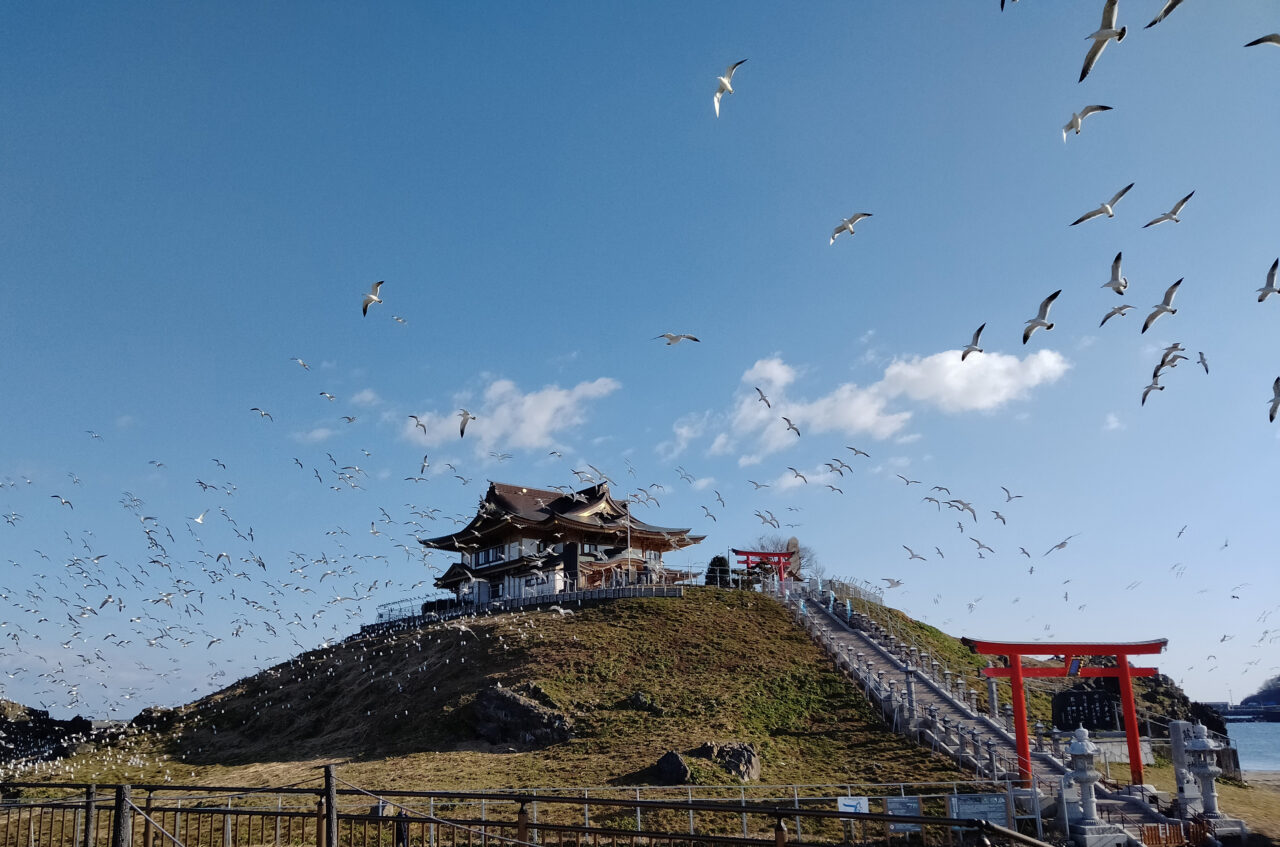
▲Black-tailed gulls, or umineko, flying around Kabushima Shrine
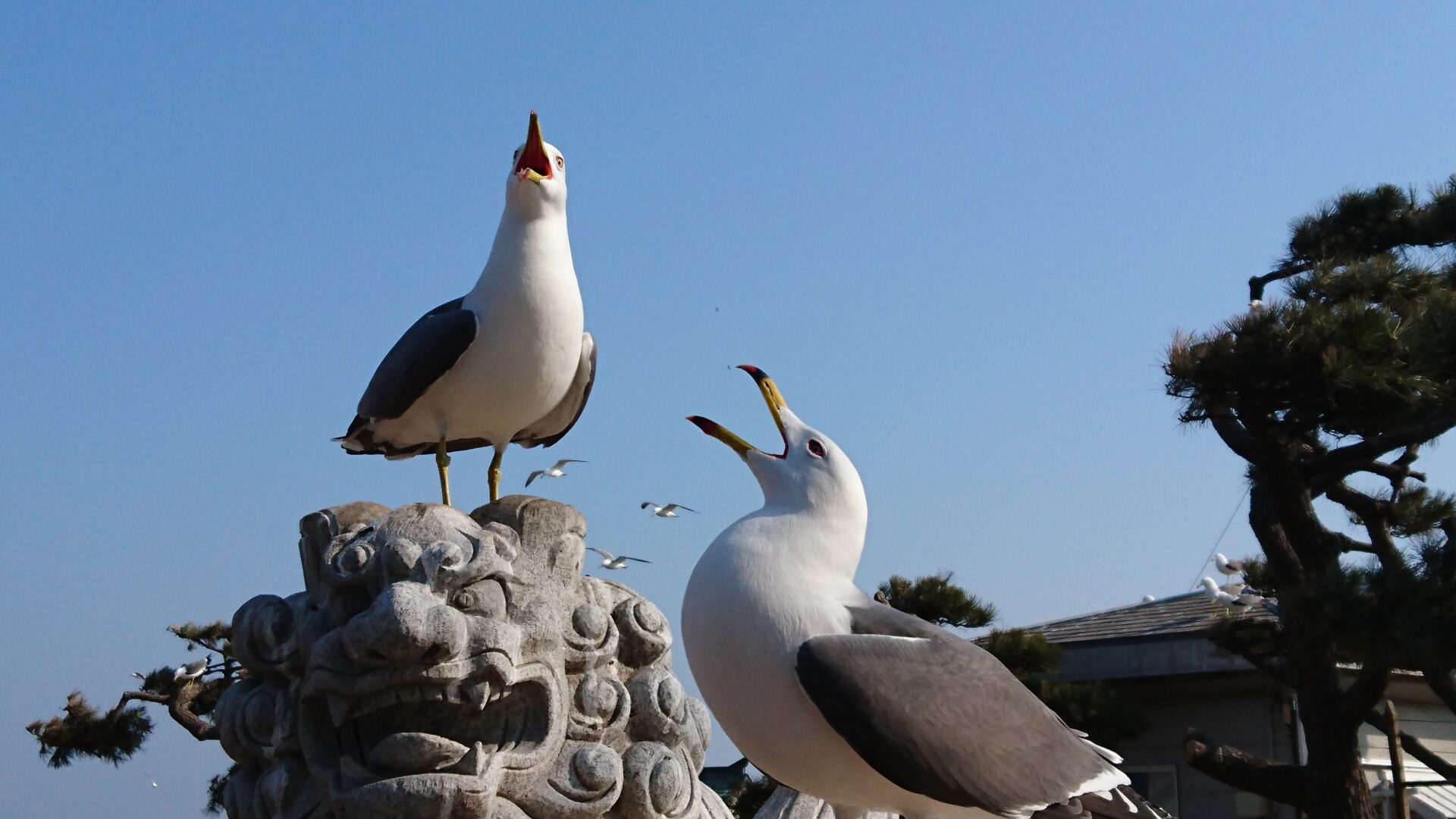
▲ Be careful of the droppings from the umineko above. Use the umbrellas available when you visit the shrine.
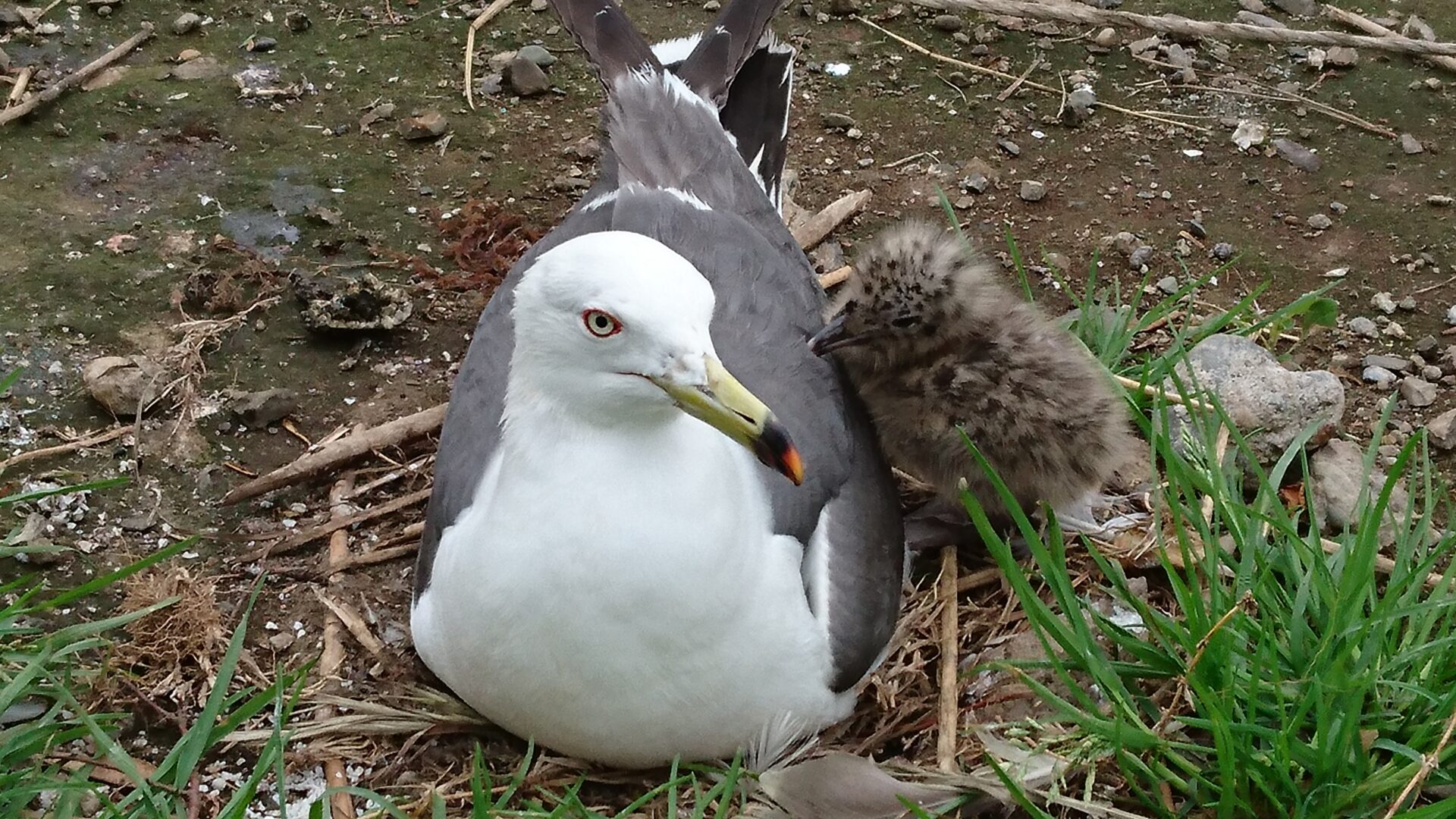
▲ Since this is a breeding ground for the umineko, you can watch them warming their eggs and taking care of their young ones up close (from June to August).
Be Amazed by the Number of Umineko Dancing Above You!
Be Amazed by the Number of Umineko Dancing Above You!This is the only place in Japan where the breeding of back-tailed gulls, or umineko, can be observed up close. It is designated as a national natural monument. The umineko arrive in early March and begin laying eggs in April. Then in June, their chicks hatch and then the gulls depart the island in August. In May, the entire island blossoms with canola flowers with the umineko flying over the area. At the entrance of the island is a scarlet-colored torii gate, and at the top of the stone steps is Kabushima Shrine, dedicated to Benzaiten (goddess of fortune), which has long been believed to provide blessing for safe fishing and prosperous business. The combination of colors – the yellow canola blossoms, red torii gate, white gulls, and blue sky is a beautiful sight indeed.
Kabushima Shrine
Same-56-2 Samemachi, Hachinohe, Aomori
Phone|+81 (0)178-34-2730
Hours of Visitation| 9:45–17:20 (April to the end of September)
9:45–16:50 (October to the end of March)
*Hours subject to change in the case of bad weather

5min on foot
Hachinohe City Marine Science Museum “Marient”
A Marine Science Museum for Everyone
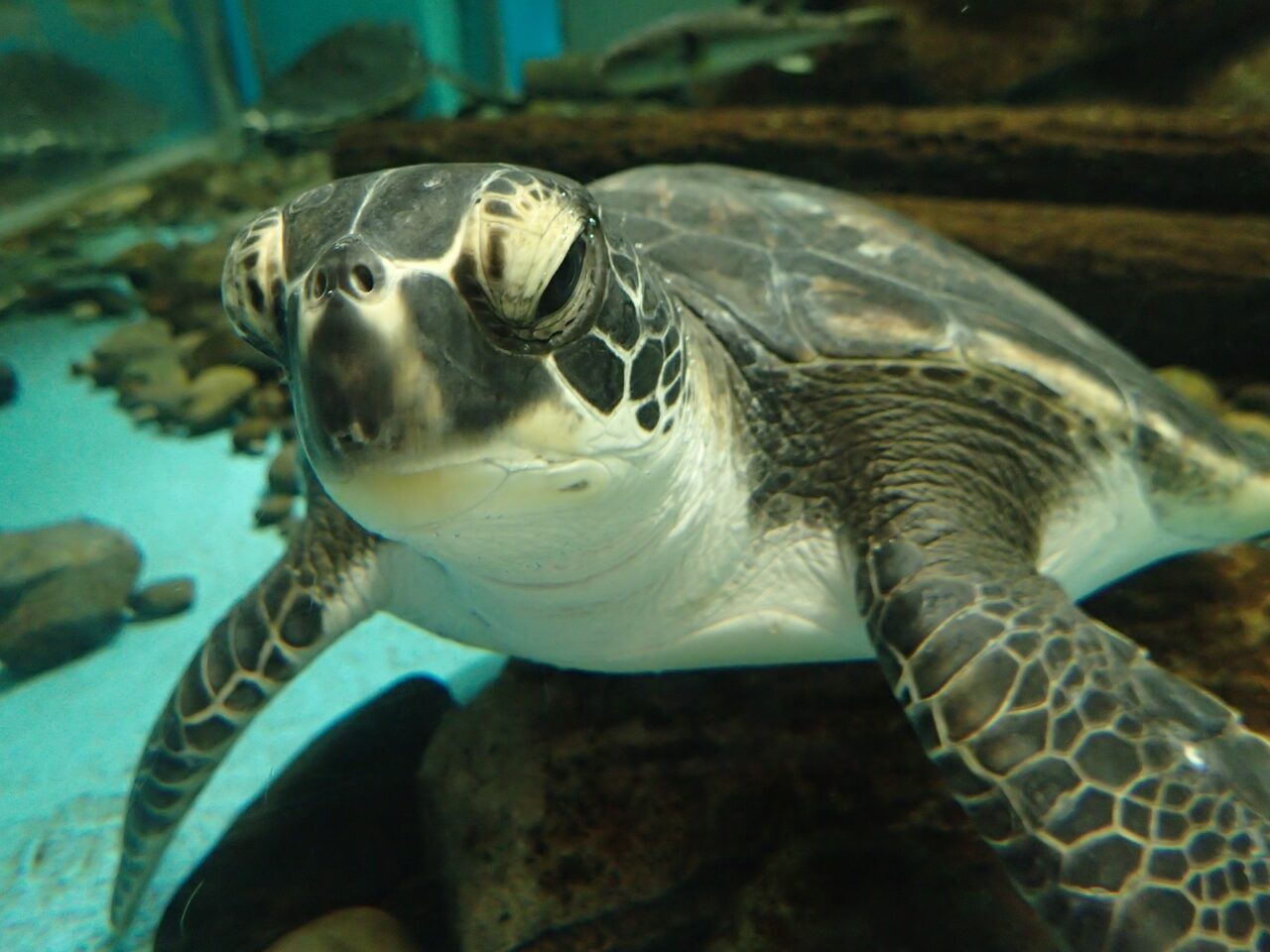
▲ The Popular Green Turtles at Marient
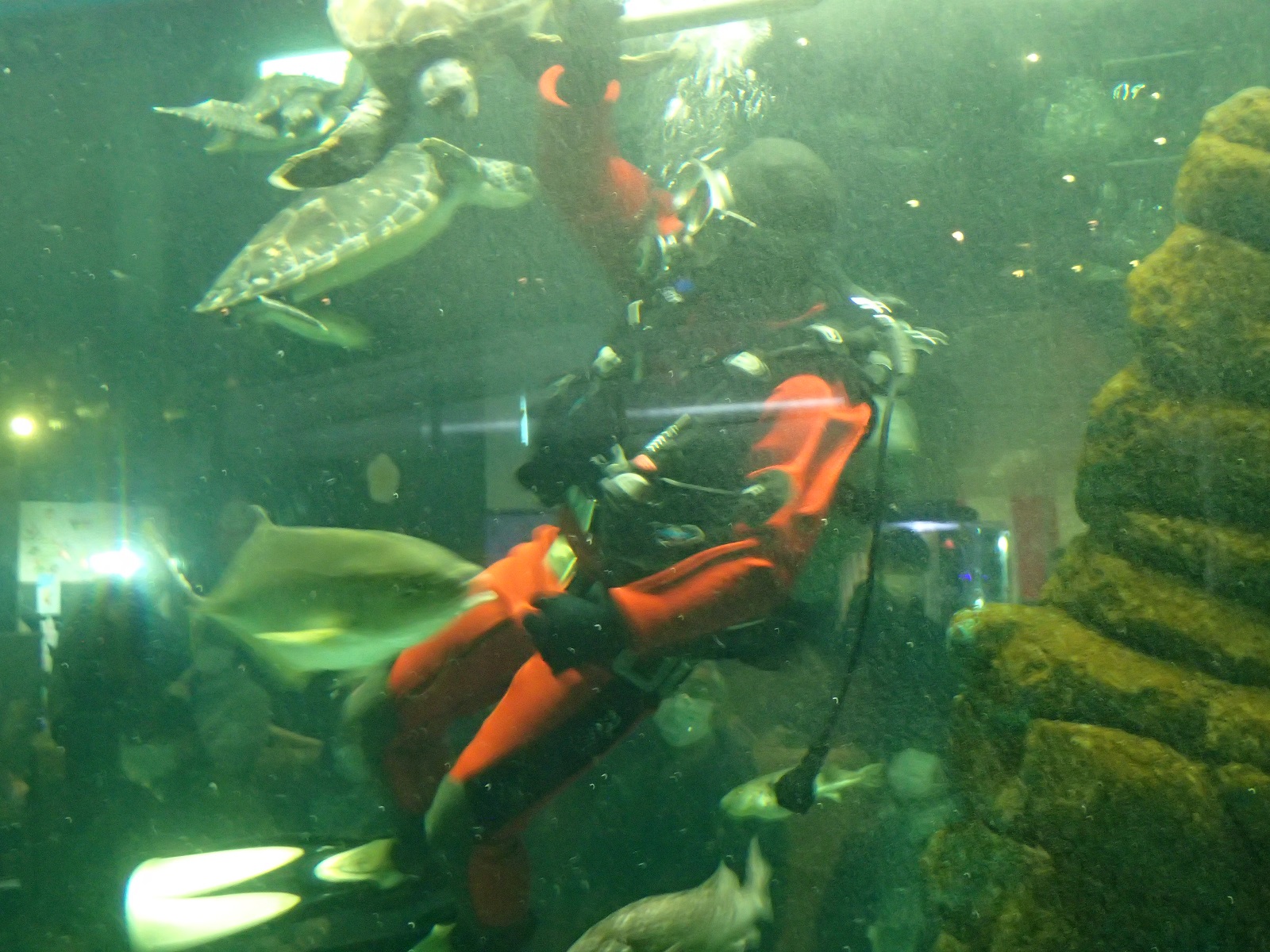
▲ Feeding by ‘Marine Rangers’
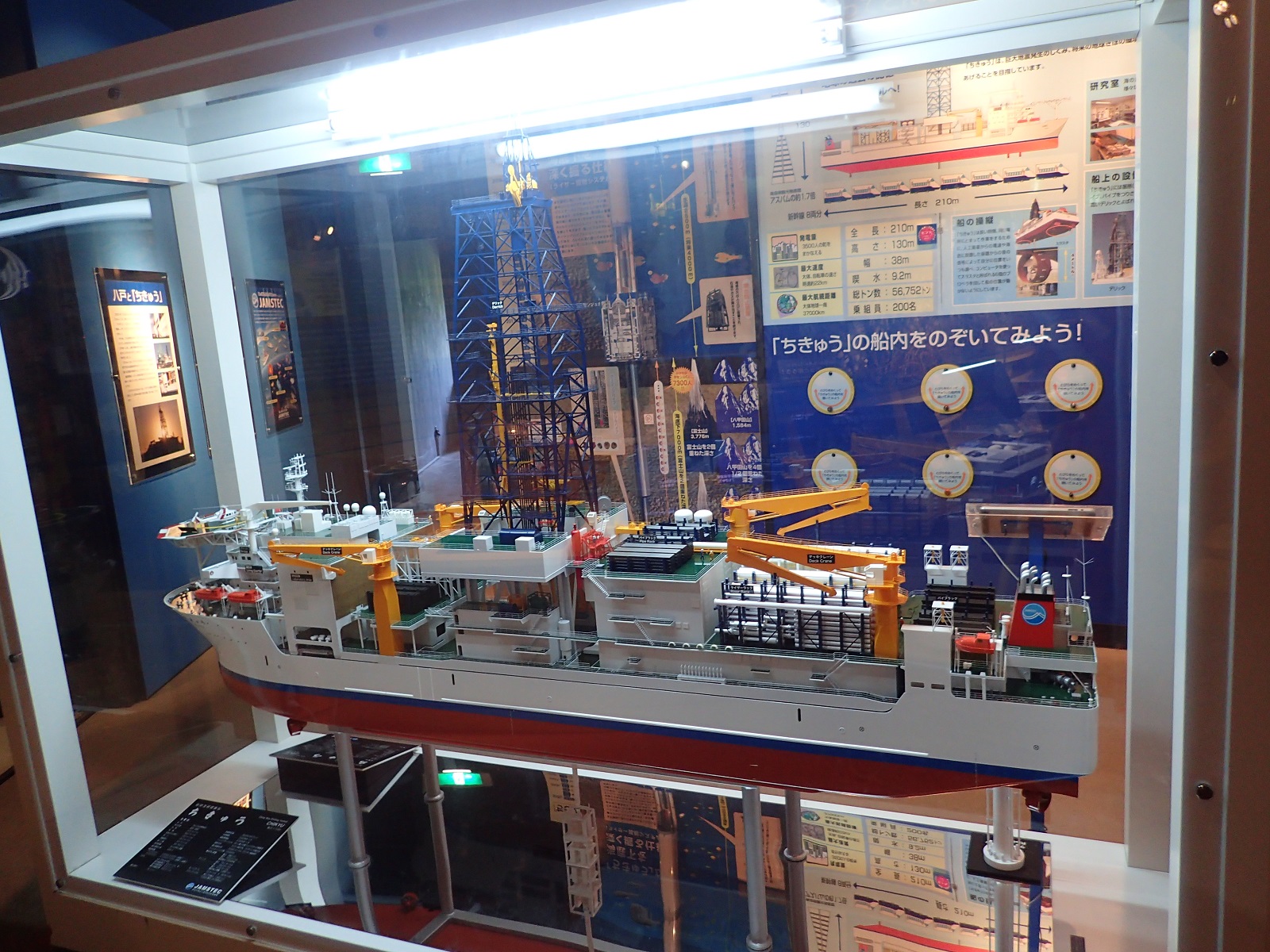
▲ Inside the Information Building
What is Happening in the World Under the Sea?
This museum opened in 1989 as a tourist facility to introduce the marine life of Hachinohe City. Visitors can enjoy learning about the ecology and behaviors of Hachinohe’s representative squid and gulls, as well as fish from the waters around Hachinohe, by seeing, touching, and interacting with them. In addition to holding special exhibitions, there are many exciting exhibits and projects, such as a ‘touch tank’ where visitors can directly touch the creatures, as well as areas where visitors can observe marine rangers feeding fish up close. In addition, the latest research data from the world-class Deep-sea Scientific Drilling Vessel “Chikyu” of the Japan Agency for Marine-Earth Science and Technology (JAMSTEC) are on display.
Hachinohe City Marine Science Museum “Marient”
14-33 Shimomatsu-Naeba, Oaza-Same-cho, Hachinohe-shi, Aomori
Phone|+81 (0)178-33-7800
Open all year round (with occasional closures)
Opening Hours |9:00-17:00 (Jun to the end of August|9:00-18:00)
Marine Science Museum Bus Stop

Umineko-go Single Coin Bus Tanesashi Coast Leisure Bus
Dep. 11:14
Arr. 11:37
Travel time| 23 min
11:40 Tanesashi Kaigan Information Center
Take a stroll on the natural lawn at Tanesashi (Coast)
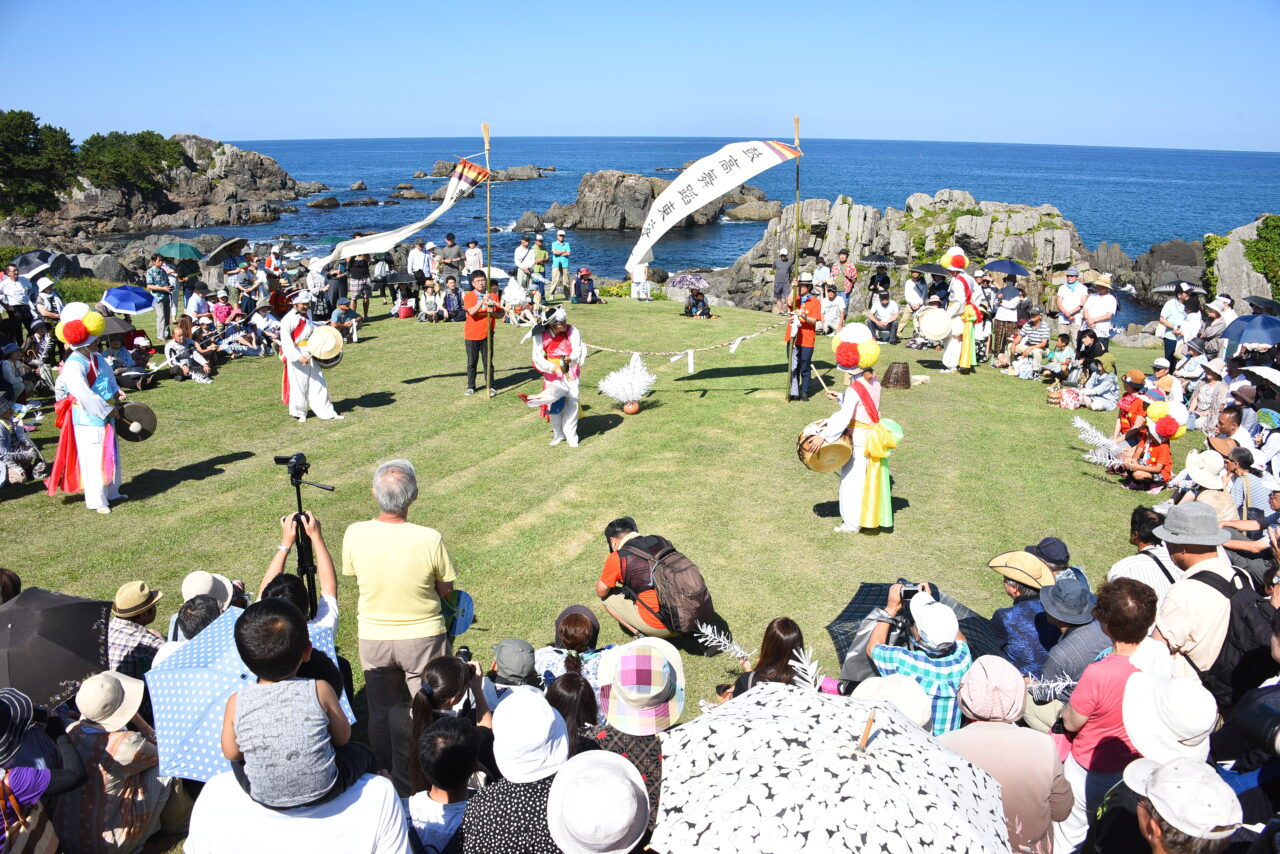
▲ Photo taken at the Sanriku International Arts Festival in 2016 at Tanesashi Coast
From the Spectacular Scenery to the Mystical Pine Forests
Take part in a 2-hour trekking program that starts and ends at the Tanesashi Kaigan Information Center. Local guides will take you to the Tanesashi Coast area of the “Michinoku Coastal Trail” from Kabushima to Hamagoya, Ashigezaki, Tamurazai Cape, Yodo no Matsubara, natural grassland, Takaiwa Observatory, and more. You can discover new charms of the Tanesashi Coast. Even first-timers can easily experience the walk along the Tanesashi Coast while enjoying a variety of stories from the locals.
“From the Spectacular Scenery to the Mystical Pine Forests” Tamurazaki Cape and Yodo no Matsubara Route
Time: 12:38–14:15 (Gather at 12:20)
Participation Fee: 1,000 JPY (including guide fee and insurance)
*Reservations are required
*This program is only available on September 10, 2022.
For more information, please contact the Tanesashi Kaigan Information Center.
Tanesashi Kaigan Information Center
14-167 Samemachi, Tanakubo,Hachinohe,Aomori
Phone|+81 (0)178-51-8500
Opening Hours |April to the end of November / 9:00-17:00
December to the end of March / 9:00-16:00
Closed|December 29th-January 3rd

5min on foot
Tanesashi Kaigan Sta.

JR Hachinohe Line Kuji direction
Dep. 15:01
Arr. 15:23
Travel time|22 min
Taneichi Sta.

15min on foot
Hirono Townspeople Cultural Center (Cecilia Hall)
Dancing Through Hirono:The Geinoh Meeting
16:00-18:00
Dancing Through Hirono:The Geinoh Meeting
Join us to talk and dance with the young geinoh practitioners!
The young geinoh practitioners from Hirono Town, along with professional artists and community development coordinators, will gather in Hirono Town to discuss the charms of the performing arts. You can join the meeting to discuss Sanriku and the performing arts, or just enjoy watching and experiencing the performing arts of the participating groups.
Hirono Townspeople Cultural Center (Cecilia Hall)
Dai 24 Chiwari-124-3 Taneichi, Hirono, Kunohe District, Iwate
Phone| +81 (0)194-65-5411

15min on foot
Taneichi Sta.

JR Hachinohe Line Hachinohe direction
Dep. 19:02
Arr. 19:52
Travel time|50 min
Honhatinohe Sta.

10min on foot
Hachinohe Yokocho
A Nostalgic Space with an Atmosphere from the Showa Era
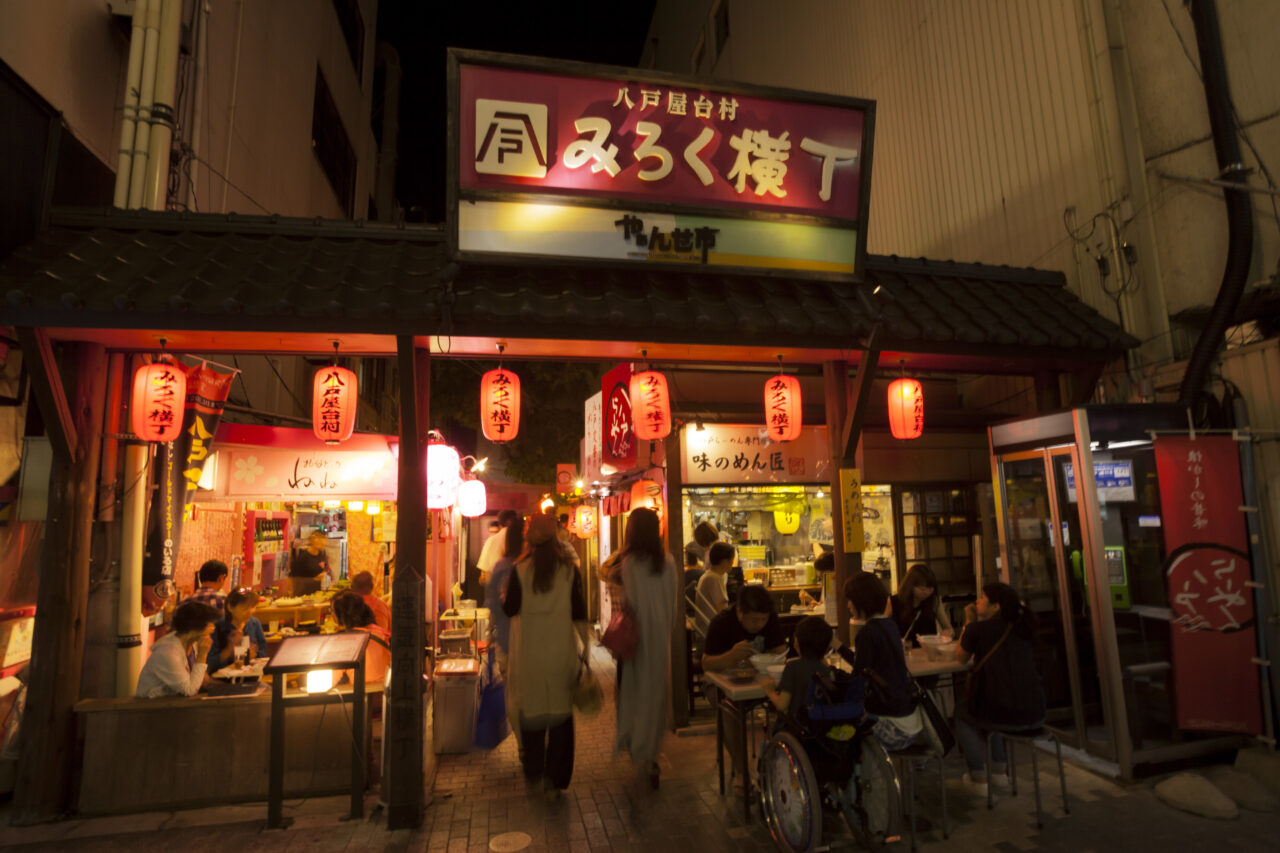
▲ Miroku Yokocho
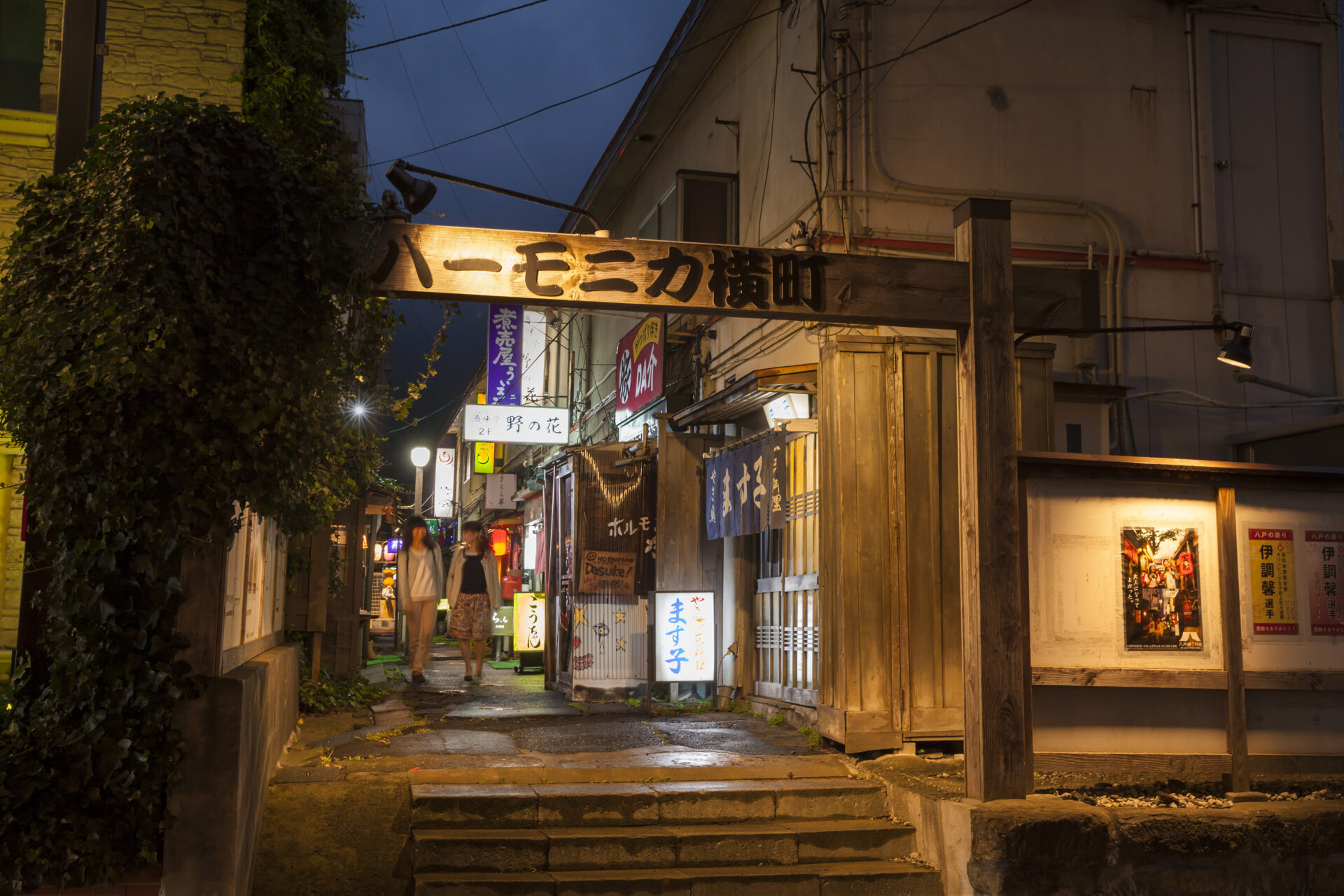
▲ Harmonica Yokocho
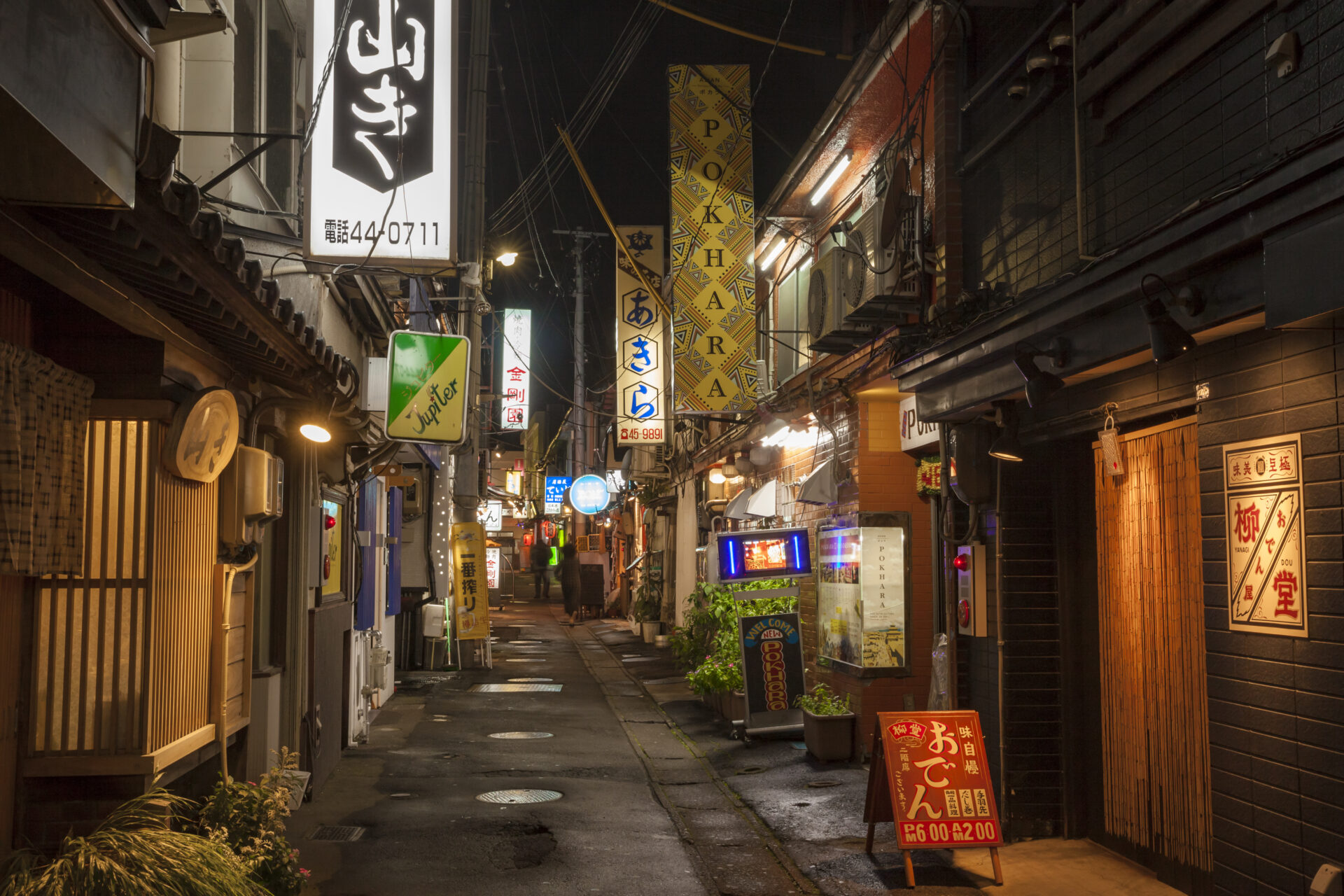
▲ Nagayokocho Rensa-gai
Forget about Time and Enjoy the Tasty Sake and People’s Kindness.
In Hachinohe, there are still eight yokocho (alleyways) remaining, lined with famous restaurants loved by the locals. They are bustling every night with people seeking the atmosphere of the Showa period, good sake and food.
Each yokocho has its own unique atmosphere, with a wide variety of stores, including izakaya (Japanese-style pubs) serving Hachinohe’s local cuisine, small restaurants where regular customers gather, long-established snack bars, and ethnic restaurants. One of the charms of yokocho is the close proximity to shopkeepers and neighboring customers, which makes it easy to become friends with those you meet for the first time.
Since hopping from one stall to another is the best part of the experience, we recommend visiting several stalls to enjoy a variety of tastes!
Hachinohe Yokocho (8 locations)
- Miroku Yokocho
- Tanuki Koji (Racoon Alley)
- Goban-gai (5th Street)
- Hachinohe Showa Dori
- Harmonica Yokocho
- Nagayokocho Rensa-gai
- Kuchiicho Rensa-gai
- Hana Koji (Flower Alley)
■Contact
NPO Iwate Arts Support Center
3F Morioka Odori Bldg. 15-7 1-chome Minami Odori, Morioka, Iwat e 020-0874
TEL|+81-19-656-8145
FAX|+81-19-656-8146
MAIL| sanfes@iwate-arts.jp
Areas
Artists
-
Nakano Fuji no Kai
Bon odori dances from the area once called Nukanobu, spread from the southern Aomori to northern Iwate region, are called “Nanya doyara” and have long been enjoyed as one of the few forms of entertainment among the people. It is said that there are hundreds of varieties of bon odori, with each region and village having their own unique characteristics and variations.
In today’s world of diversifying entertainment, opportunities to enjoy the Nanya doyara with the participation of the people are decreasing, and the number of skilled performers are aging. Nakano Fuji no Kai, a preservation society founded by local volunteers in 2014, is working to enhance the appeal of its hometown by promoting the Nanya doyara, which is unique to the Nakano area of Hirono Town, to the next generation, and by expanding its activities into a wide range of PR and exchange fields. -
Ono Naru Ikazuchi Taiko
Ono Naru Ikazuchi Taiko was formed in 2000 by a group of young men and women who took a taiko drumming course. Today, the group has 28 members ranging in age from 5 to 46 years old.
The name, “Ono Naru Ikazuchi Daiko”, comes from Naru Ikazuchi Shrine, the town deity of Ono, in Hirono Town (formerly Ono Village). It is hoped that the taiko drumming will develop to become something that represents the former Ono Village, and be loved by the villagers as a prayer for a good harvest and family safety.
Trained in musical composition and performance by Warabi-za, a renowned troupe based in Akita Prefecture, the group is named after the image of lightning, and their drum music is valiant and charged with youthful passion and freshness. -
Kadono Hama Komaodori Preservation Society
During the Warring States period, the Nanbu Hachinohe Clan ruled the area from southern Aomori to northern Iwate. The Koma Odori dance is said to be a dance that depicts the scene of going into battle, and cavalry battles at that time. It is also said that the dance was performed to comfort the spirits of horses and ancestors who died in battle, as well as to ensure the safety of the horses, which always supported the people as war and farm horses.
Since 1978, the dance has also been performed by children at local elementary and junior high school athletic meets and cultural festivals to pass on the geinoh and to promote their physical fitness and growth.
There are 14 types of dances: 7 dances performed with horse-like costumes, and 7 stick dances performed with poles, swords, and long swords. -
Iwate Prefecture Iwaizumi High School’s Geinoh Club
Since its establishment in 1990, the club has performed at nine national competitions, three times at the National Theatre of Japan, and once in Paris. Many of the members not only belong to the club, but they are also a group of volunteers who aspire to pass on the Nakano Nanazumai dance. Although it is difficult to balance their activities during the peak season, they feel the need in spreading the local folk dance to as many people as possible, and to pass it on to younger generations.
It is said that the Nakano Nanazumai was created around the time of the “Seven Years of Famine” in the Tempo era based on the “Shittogi-jishi-mai” of the Kuromori Kagura from Miyako City. With the dancers divided into seven roles, and seven different dances comprise the whole, it is said that this is where Nanazumai (literally, seven dances) got its name. The dancers play the role of farmers who cultivate the fields, plant crops, protect them from vermin, and share the harvest, all in the hope of a bountiful gathering. -
Iwate Prefecture Kitakami Shonan High School’s Onikenbai Club
Onikenbai is a geinoh handed down by farmers in the Kitakami region of Iwate Prefecture, and is said to have begun approximately 1,300 years ago.
Under the guidance of Iwasaki Onikenbai, a Nationally-Designated Important Intangible Folk Cultural Property, the club of 50 members participated in the National High School Culture Festival held in Tokyo in August 2021, representing Iwate Prefecture.
They perform a brave and dynamic sword dance called “Katana Kenbai no Kurui”, a four-sided formation dance called “Hitori Kago”, and “Sanban-niwa no Kurui” which is rich in variety in both dance and music, among others.
Sanriku International Arts Festival 2022 REVIVE
– An FY 2022 Japan Cultural Expo Project Presented and Co-presented by Japan Arts Council and Agency for Cultural Affairs, Government of Japan

Organized by|Sanriku International Arts Committee, Japan Arts Council, and Agency for Cultural Affairs, Government of Japan
Co-organized by|Hachinohe City, Hashikami Town, Hirono Town, Kuji City, Noda Village, Fudai Village, Tanohata Village, Iwaizumi Town, Miyako City, Yamada Town, Otsuchi Town, Kamaishi City, Ofunato City, Rikuzentakata City, Sumita Town, Sanriku Railway Co., Ltd., Japan Folk Performing Arts Association, NPO Iwate Arts Support Center, and NPO Japan Contemporary Dance Network
Cooperated by|NPO Shinsai Regain, imajimu LLC, Tohoku Cultural Property Video Research Institute, Minna no Shirushi LLC